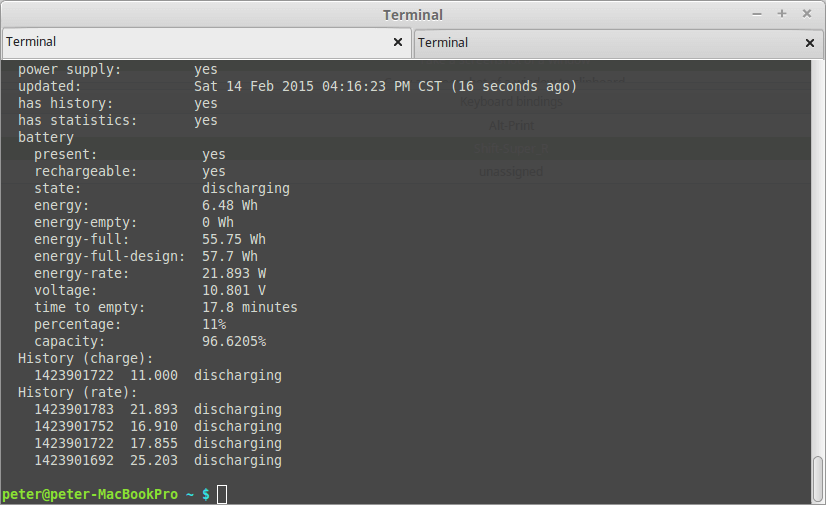

We can also view battery information and information about the application. The fifth button (Advanced mode) will open the application preferences window of the application to be able to configure it.

Our laptop will be back to normal power consumption,
#Linux battery status install
Now we will execute the next command to install the application: sudo apt-get install slimbookbattery You can also do it in a Terminal (Ctrl+Alt+T): sudo add-apt-repository ppa:slimbook /slimbookīy doing this we will have added the Slimbook repositories. You can download Slimbook Battery from our application download center for Linux with our repositories in Launchpad.
#Linux battery status how to
How to install Slimbook Battery in our system? Visit ourĪnnouncement: Support the development of our apps by joining our Patreon and get early access to new app releases and exclusive goodies The energy saving applications like TLP focus on reducing power consumption when the computer is in battery mode, by disabling extra options that are not being used. Each energy mode comes with default values, but the user is allowed to change the most important values, to adjust or avoid errors in their hardware. The application implements three different energy modes: «energy saving», «balanced» and «maximum performance». This means that this application is not just compatible with Slimbook laptops, but also with many other different computer brands and manufacturers who work with Ubuntu and derivatives.

In this version, this simple application offers a wide range of possibilities, thanks to it’s integration of other applications, services and drivers, such as TLP, Intel_pstate, AMD and NVIDIA.

Here are some of the most visible changes: Slimbook Battery 4 is the new version of the application to control and increase the battery life of laptops. QFile bCap("/sys/class/power_supply/BAT0/capacity") ĪcLine.open(QIODevice::ReadOnly | QIODevice::Text) ĪcAdp.open(QIODevice::ReadOnly | QIODevice::Text) īCap.Slimbook Battery 4: application to optimize your laptop's battery QFile acAdp("/sys/class/power_supply/ADP0/online") QFile acLine("/sys/class/power_supply/AC/online") I can not guarantee that other devices will name their files there exactly the same. therefore I could just read the relevant files in sys/class/power_supply/.
#Linux battery status code
In my case I code for only one special device type and a known set of development machines. Even though user vahanchos answer was helpful for me, and probably is the way to go for others, I ended up with a different solution.


 0 kommentar(er)
0 kommentar(er)
